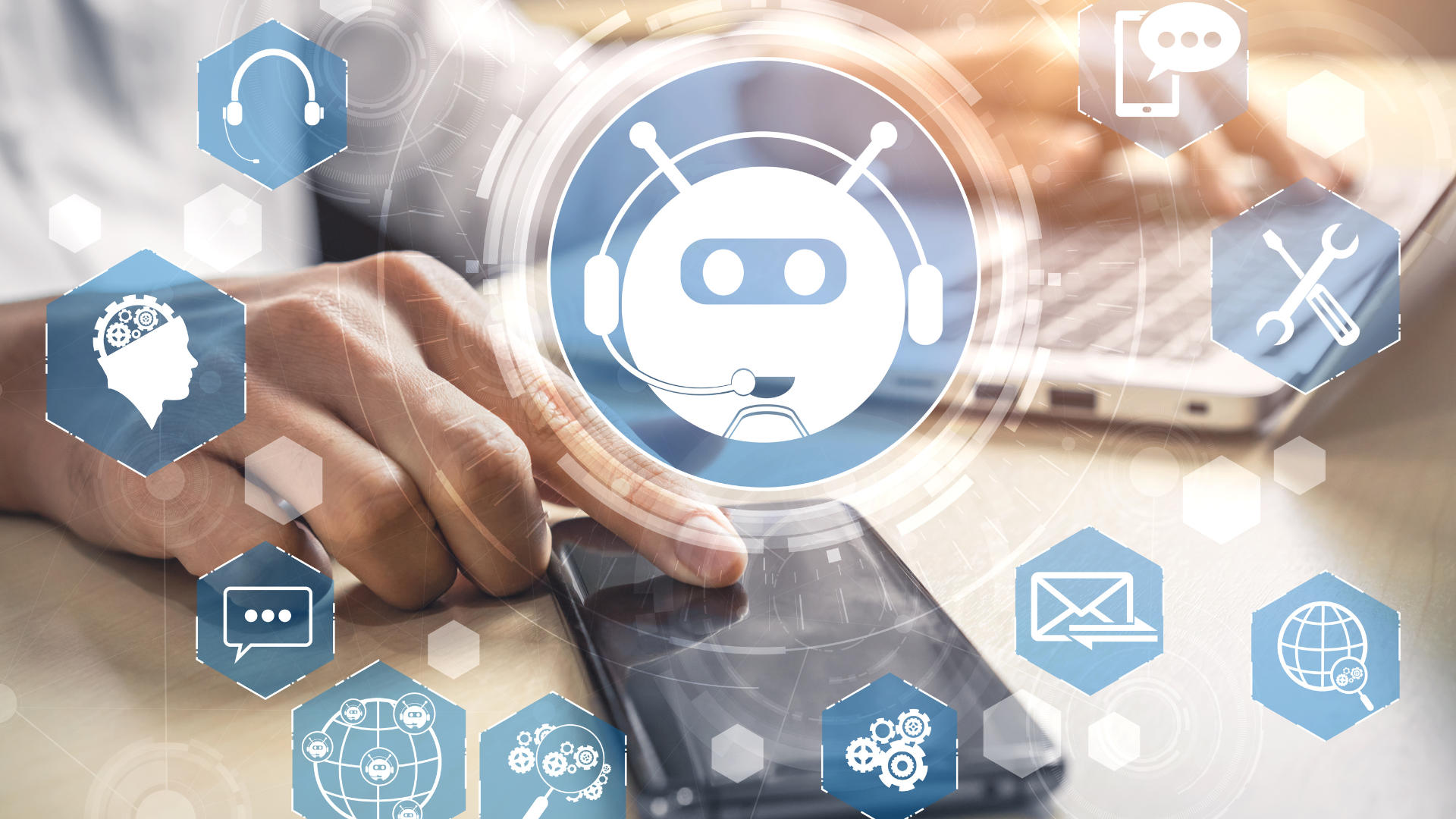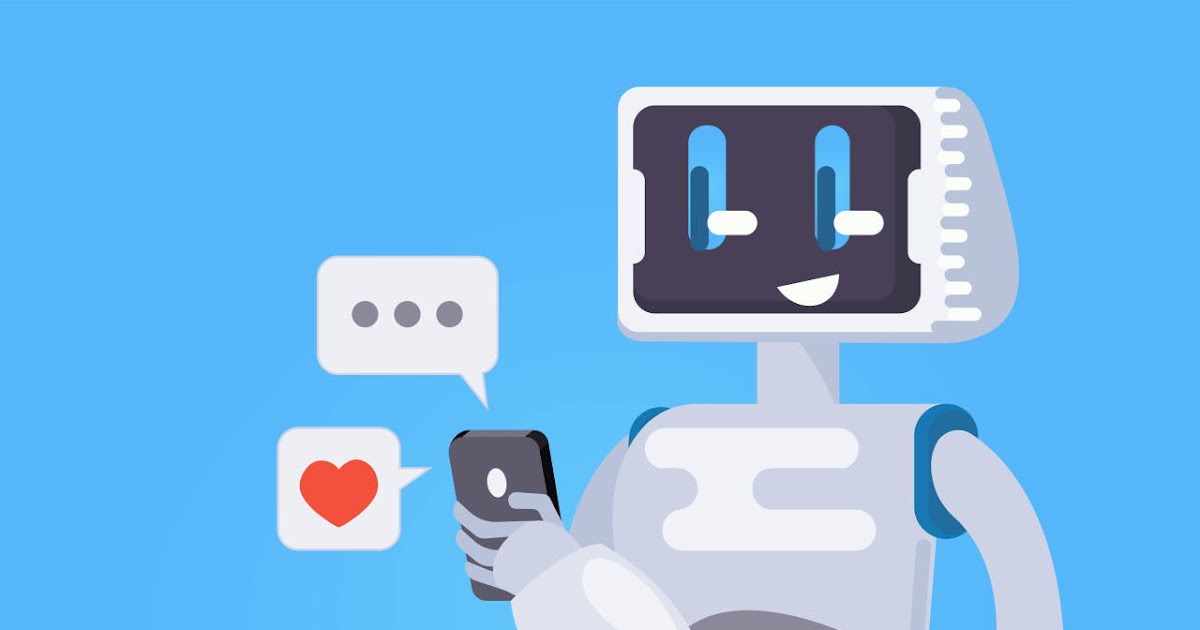Chatbots and AI: Enhancing Customer Service
In the ever-evolving landscape of customer service, the integration of chatbots and artificial intelligence (AI) has emerged as a transformative force. This article delves into the profound impact of chatbots and AI on customer service, highlighting the imperative need to enhance the quality of customer interactions.
Understanding Chatbots and AI
What Are Chatbots and AI? Chatbots, short for chat robots, are AI-driven software applications designed to simulate human-like conversations. AI, or artificial intelligence, refers to the capacity of machines to mimic human cognitive functions, such as learning and problem-solving. When these two entities converge, they form the foundation of advanced customer service.
How Chatbots Work Chatbots operate on intricate algorithms, processing and interpreting user input to generate relevant responses. These systems rely on natural language processing (NLP) and machine learning, continually improving their interactions with users.
The Role of AI in Customer Service AI’s role in customer service extends far beyond chatbots. It encompasses a broader spectrum of applications, including predictive analytics, data-driven decision-making, and personalized customer experiences. AI, in essence, acts as the backbone for the innovation that chatbots bring to the table.
Benefits of Chatbots and AI in Customer Service

Improving Response Time One of the foremost advantages of chatbots and AI in customer service is the lightning-fast response time they provide. With the ability to instantly address customer inquiries, they eliminate the frustrating wait times that plague traditional support.
24/7 Availability Chatbots and AI platforms are available around the clock, eradicating the constraints of time zones and working hours. This accessibility ensures that customers can seek assistance whenever they need it.
Personalized Customer Interactions Through data analysis and machine learning, chatbots and AI tailor interactions to the unique preferences and needs of each customer. This personalization fosters a deeper connection and increased satisfaction.
Handling Repetitive Tasks Repetitive tasks can be a significant drain on human resources. Chatbots and AI excel in automating these tasks, allowing human agents to focus on more complex and value-added activities.
Chatbots vs. Human Agents

Pros and Cons of Using Chatbots The utilization of chatbots offers cost-efficiency, scalability, and consistency in customer service. However, their limitations in handling complex issues and empathetic responses must be acknowledged.
Complementing Human Agents with Chatbots The optimal approach involves a harmonious collaboration between chatbots and human agents. Chatbots excel in routine tasks, while human agents provide the emotional intelligence and problem-solving abilities that AI lacks.
Striking the Right Balance Achieving the right balance between chatbots and human agents is essential. It depends on the nature of the business, the needs of customers, and the complexity of the issues at hand.
Implementing Chatbots in Customer Service
Identifying Use Cases Recognizing the appropriate areas for chatbot implementation is a crucial initial step. Businesses must assess their specific needs and objectives to deploy chatbots effectively.
Choosing the Right Chatbot Solution Selecting a chatbot solution that aligns with your business goals is paramount. Factors such as the level of customization, integration capabilities, and scalability play a significant role in this decision.
Integrating Chatbots with Existing Systems Seamless integration with existing systems and processes ensures that chatbots become a valuable addition rather than a disruptive element in the customer service ecosystem.
Creating an Effective Chatbot

Designing the User Interface A user-friendly and visually appealing interface is essential for a positive customer experience. Chatbots must have an intuitive design to engage users effectively.
Training Chatbots for Better Responses Training chatbots involves feeding them data, fine-tuning their algorithms, and continuously updating their knowledge base. This ongoing process enhances their ability to provide accurate and contextually relevant responses.
Ensuring a Natural Conversation Flow Achieving a natural conversation flow involves NLP, which enables chatbots to understand the subtleties of human language, including idioms and colloquial expressions. This capability is integral to fostering authentic interactions.
Measuring Chatbot Performance
Key Metrics for Evaluating Chatbot Success Metrics such as response time, customer satisfaction ratings, and issue resolution rates are vital indicators of a chatbot’s performance. These data points offer insights into their effectiveness.
Continuous Improvement Strategies Regular analysis of performance metrics is the foundation for ongoing improvement. Implementing feedback and fine-tuning chatbots’ algorithms ensures they evolve and adapt to changing customer needs.
Customer Feedback and Chatbot Iteration

Gathering Customer Feedback Collecting feedback from customers regarding their experiences with chatbots is invaluable. It helps identify pain points and areas for enhancement.
Iterative Development for Better Customer Service Iterative development involves using customer feedback to make informed adjustments to chatbots. These refinements enhance the overall quality of customer service interactions.
Overcoming Challenges in Chatbot Implementation
Dealing with Misunderstandings and Miscommunications Chatbots occasionally misinterpret user queries. Strategies for addressing and rectifying these misunderstandings are crucial to maintaining customer satisfaction.
Data Privacy and Security Concerns Protecting customer data is non-negotiable. Ensuring the highest levels of data privacy and security is an integral part of chatbot implementation.
Handling Complex Customer Queries While chatbots excel at routine tasks, they may struggle with complex issues. Preparing human agents to seamlessly take over when necessary is essential for a positive customer experience.
Use Cases and Industries
Chatbots in E-Commerce In the e-commerce sector, chatbots assist with product recommendations, order tracking, and handling customer inquiries, enhancing the overall shopping experience.
Chatbots in Healthcare Healthcare chatbots offer appointment scheduling, symptom analysis, and medication reminders. They streamline patient engagement while reducing administrative burdens.
Chatbots in Banking and Finance Chatbots in the financial industry expedite account inquiries, fund transfers, and even provide investment advice, offering customers more convenience and accessibility.
Chatbots in Hospitality In the hospitality sector, chatbots handle booking reservations, room service requests, and provide local information to guests, ensuring a seamless and enjoyable stay.
Chatbot Trends and Innovations
AI-Powered Virtual Assistants The evolution of chatbots into AI-powered virtual assistants introduces more comprehensive support, enabling them to complete complex tasks on behalf of users.
Multilingual Chatbots Catering to a global audience, multilingual chatbots can converse in multiple languages, breaking down communication barriers and reaching a broader customer base.
Emotional Intelligence in Chatbots Developments in AI are paving the way for chatbots to exhibit emotional intelligence, allowing them to recognize and respond to human emotions, further enhancing user engagement.
Integration with IoT Devices Chatbots integrated with Internet of Things (IoT) devices create a seamless user experience. They can control and manage smart devices, offering a new level of convenience.
Real-Life Success Stories
Companies Using Chatbots Effectively Numerous companies have successfully integrated chatbots into their customer service strategies, including industry giants like Amazon, Apple, and Facebook. These examples illustrate the potential benefits of chatbots in action.
Measurable Benefits of Implementing AI-Driven Customer Service Tangible improvements, such as increased customer satisfaction, reduced response times, and cost savings, demonstrate the substantial returns on investment that chatbots and AI bring to customer service.
The Future of Chatbots and AI in Customer Service
Predictions and Trends for the Coming Years The future holds even more transformative potential for chatbots and AI in customer service, with trends such as enhanced language processing, AI ethics, and predictive service becoming increasingly relevant.
Emerging Technologies and Their Impact Emerging technologies like quantum computing and advanced machine learning algorithms promise to push the boundaries of what chatbots can achieve, offering even more sophisticated customer service solutions.
Chatbots and Customer Service Ethics
Ensuring Ethical Use of AI in Customer Service As chatbots become more advanced, the ethical use of AI in customer service is of paramount importance. Businesses must establish guidelines to ensure responsible AI implementation.
Transparency and Trustworthiness Maintaining transparency in chatbot interactions and assuring customers of their data privacy fosters trust and long-term relationships, which are integral to any successful customer service strategy.
Preparing Your Business for Chatbot Integration
Steps to Get Started The journey of integrating chatbots into your customer service involves several steps, from goal-setting to selecting the right technology and service provider.
Training and Onboarding Your Team Training your team to work alongside chatbots, providing them with the necessary tools and skills to manage and supervise the AI-driven systems, is pivotal to a seamless transition.
Conclusion
In the ever-evolving landscape of customer service, the integration of chatbots and artificial intelligence (AI) has emerged as a transformative force. As we conclude our exploration of this revolutionary technology, it’s essential to reflect on the profound impact of chatbots and AI in enhancing customer service, the challenges faced, and the future they hold.
The journey of chatbots and AI in customer service is not merely an evolution; it’s a revolution. It’s a revolution that places efficiency, personalization, and accessibility at the forefront of customer interactions. Here’s a comprehensive view of the key takeaways:
Efficiency Redefined:
One of the standout advantages of incorporating chatbots and AI in customer service is their unmatched efficiency. These virtual assistants operate at lightning speed, addressing customer inquiries and resolving issues instantaneously. The days of enduring frustratingly long wait times are behind us. This newfound efficiency not only saves time for customers but also frees human agents to focus on more complex and value-added tasks, thereby improving overall service quality.
Always Available:
In today’s interconnected world, time knows no bounds, and neither do chatbots. They stand ready to assist customers 24/7, 365 days a year. This constant availability eliminates the shackles of time zones and working hours, ensuring that customers can seek assistance whenever they need it. Whether it’s a late-night shopping query or a holiday travel reservation, chatbots are ever-present to offer support.
Personalization Matters:
Modern customers seek personalization in their interactions with businesses. Chatbots and AI excel at tailoring responses and experiences to individual customer preferences and needs. Through data analysis, machine learning, and historical interaction insights, chatbots can provide a level of personalization that was once a challenge for human agents to achieve. This personalized approach not only fosters stronger customer relationships but also leads to increased satisfaction and brand loyalty.
A Balancing Act:
Chatbots, while incredibly powerful, are not a replacement for human agents. They are complementary tools, each with its unique strengths. Chatbots thrive in automating routine tasks and providing rapid responses, while human agents bring emotional intelligence, complex problem-solving abilities, and the human touch that AI lacks. Achieving the right balance between these two resources is the key to delivering exceptional customer service.
Overcoming Challenges:
Implementing chatbots in customer service is not without its hurdles. There are initial setup costs, potential integration complexities, and the challenge of ensuring that chatbots handle complex customer queries effectively. However, with careful planning, investment in robust technology, and continuous training and support for human agents, these challenges can be surmounted.
Ethical Imperatives:
The ethical use of AI in customer service is a critical consideration. Businesses must establish guidelines and practices that ensure responsible AI implementation. Data privacy and security must be safeguarded, and transparency must be maintained to build trust with customers.
The Future Unveiled:
Looking ahead, the future of chatbots and AI in customer service holds the promise of even more profound transformations. Predictive analytics, enhanced language processing, and AI ethics will play pivotal roles. Emerging technologies like quantum computing and advanced machine learning algorithms are poised to expand the boundaries of what chatbots can achieve, offering even more sophisticated customer service solutions.
Frequently Asked Questions (FAQ) About Chatbots and AI: Enhancing Customer Service
What are chatbots, and how do they work in customer service?
Chatbots are AI-driven software applications designed to simulate human-like conversations. They work by processing user input, using natural language processing (NLP) and machine learning algorithms to generate relevant responses.
What role does AI play in customer service beyond chatbots?
AI in customer service encompasses predictive analytics, data-driven decision-making, and personalized customer experiences. It acts as the foundation for various applications, of which chatbots are just one example.
What are the benefits of using chatbots and AI in customer service?
Benefits include improved response time, 24/7 availability, personalized customer interactions, and the ability to handle repetitive tasks, leading to enhanced customer satisfaction and operational efficiency.
Are chatbots a replacement for human agents in customer service?
No, chatbots are not a replacement but a complement to human agents. They excel in routine tasks, while human agents provide emotional intelligence and handle complex issues.
How do businesses identify use cases for chatbot implementation?
Identifying use cases involves assessing specific business needs and objectives. Areas that benefit from automation, such as routine inquiries or data retrieval, are prime candidates.
What factors should businesses consider when choosing a chatbot solution?
Businesses should consider customization options, integration capabilities, scalability, and the technology provider’s reputation when choosing a chatbot solution.
How can chatbots be integrated with existing customer service systems?
Integration involves ensuring that chatbots seamlessly work with existing systems, processes, and databases, allowing them to access and update relevant information in real-time.
What is the significance of an effective chatbot user interface?
An effective user interface ensures a positive customer experience by being user-friendly, visually appealing, and intuitive, which helps engage users effectively.
How are chatbots trained to provide better responses over time?
Chatbots are trained by feeding them data and continually fine-tuning their algorithms. They learn from interactions and improve their responses based on past conversations.
What metrics are used to evaluate chatbot performance?
Key metrics include response time, customer satisfaction ratings, issue resolution rates, and conversation flow analysis, which offer insights into the chatbot’s effectiveness.
How can companies gather customer feedback for chatbot improvement?
Gathering feedback involves using surveys, customer interactions, and sentiment analysis tools to understand user experiences and identify areas for enhancement.
What are the ethical considerations when using chatbots and AI in customer service?
Ethical considerations involve ensuring responsible AI use, respecting data privacy, and maintaining transparency in interactions to build trust with customers and adhere to ethical guidelines.
Can chatbots understand and respond to multiple languages and dialects effectively?
Yes, many advanced chatbots are designed to understand and respond to multiple languages and dialects. They utilize multilingual capabilities and language models to cater to diverse customer bases.
What are some potential challenges in implementing chatbots in customer service, and how can businesses overcome them?
Challenges can include initial setup costs, integration complexities, and ensuring that chatbots handle complex customer queries adequately. To overcome these challenges, businesses should carefully plan, invest in robust technology, and provide adequate training and support to human agents.
How are chatbots evolving to provide more emotionally intelligent responses in customer service interactions?
Chatbots are evolving through advanced AI algorithms that enable them to recognize and respond to human emotions. They can analyze user sentiment, use sentiment analysis tools, and apply emotional intelligence to provide more empathetic and context-aware responses.
Within this comprehensive guide on Chatbots and AI in customer service, we have explored various aspects of this transformative technology. To dive deeper into the role of AI in revolutionizing industries, you can read our related article on “AI and Fun: Games and Entertainment” Additionally, for insights into the latest customer service trends, our article on “Emerging Customer Service Trends in 2023” provides valuable information.
To gain insights from leading industry experts on the latest trends and best practices in AI-driven customer service, we recommend exploring the informative resources provided by Forbes. Their recent article on the transformative power of AI and chatbots in reshaping customer experiences offers valuable perspectives from industry pioneers. Access the article on Medium to stay informed about the cutting-edge advancements in customer service technology.




Uma resposta